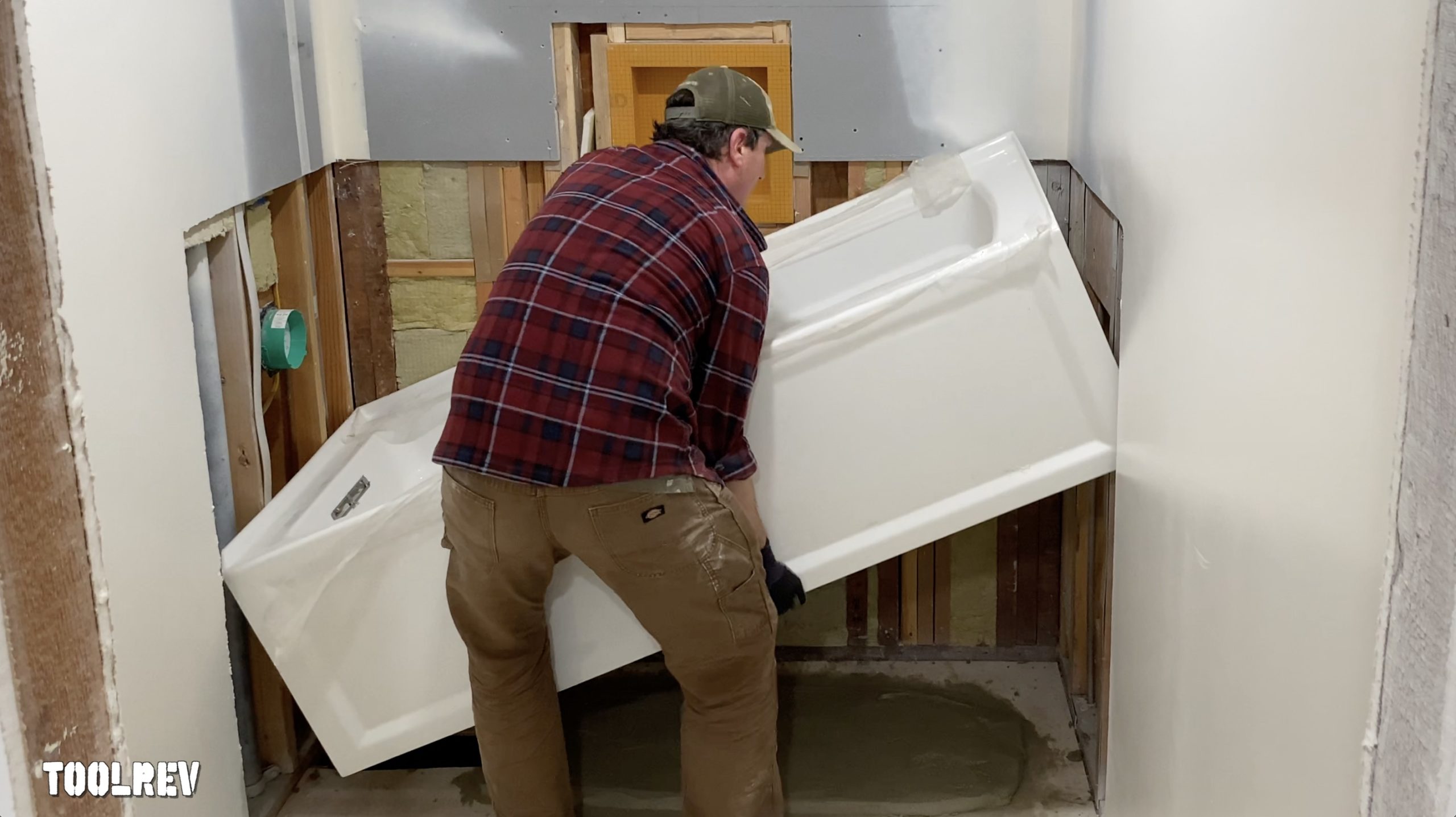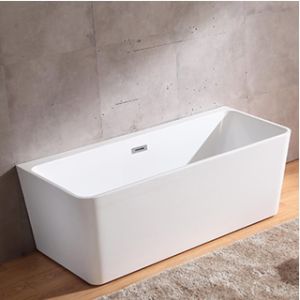Exactly How to Set up a Tub
Exactly How to Set up a Tub
Blog Article
The author is making a few good observations about Installing A Bathtub in general in the article followed below.

Setting up a bath tub isn't precisely rocket science, however it does call for solid plumbing, carpentry, and in some cases, tiling abilities. Changing an old bathtub with a new one is additionally a moderately challenging job. If the old bathtub is readily accessible, the job can relocate speedily; if you have to open up a wall to eliminate the old bathtub and also position the brand-new bathtub, the task is a lot harder. In either instance, the project is within a home handyman's skills, although you will need a helper to leave the old tub as well as embeded in the brand-new one. Make sure you have certified on your own for the work as well as fit trying it. As opposed to working with a service provider to take over a halfway-completed job, it is better to consider utilizing one before you begin. Chances are you may need an expert plumber to make tube connections.
This post will certainly aid you set up a brand-new bath tub in your washroom if you have actually already purchased a new tub as well as don't need to alter the setup of your previous water pipes.
Your devices and also product list need to make up the following:
Removing Old Taps
If you need to replace old taps with new ones as a part of your installment, then the first thing you must do is disconnect the water system. After doing so, switch on the faucets to drain any water remaining in the system. The process of removing the existing faucets can be fairly troublesome because of the restricted access that is frequently the case.
Make use of a container wrench (crowsfoot spanner) or a tap tool to undo the nut that attaches the supply pipelines to the taps. Have a cloth all set for the continuing to be water that will certainly come from the pipes. As soon as the supply pipelines have been eliminated, make use of the exact same tool to loosen up the nut that holds the faucets onto the bath/basin. You will need to quit the solitary taps from transforming throughout this process. Once the faucets have actually been removed, the holes in the bath/basin will certainly need to be cleaned of any old securing compound.
Before proceeding to fit the brand-new faucets, compare the pipeline connections on the old taps to the brand-new taps. If the old faucets are longer than the brand-new taps, after that a shank adapter is required for the new faucets to fit.
Fitting New Touches
If the tails of the brand-new taps are plastic, after that you will require a plastic port to prevent damages to the thread. One end of the adapter fits on the plastic tail of the faucet and the various other end offers a link to the existing supply pipes.
If you require to fit a monobloc, then you will certainly require lowering couplers, which connects the 10mm pipeline of the monobloc to the conventional 15mm supply pipe.
Next off, position the faucet in the mounting opening in the bath/basin guaranteeing that the washing machines are in area between the tap as well as the sink. Safeguard the tap in position with the manufacturer offered backnut. As soon as the tap is firmly in place, the supply pipelines can be connected to the tails of the faucets. The taps can either be linked by utilizing corrugated copper piping or with typical faucet connectors. The previous kind ought to be attached to the tap finishes initially, tightening only by hand. The supply pipelines can later on be connected to the other end. Tighten both ends with a spanner after both ends have been attached.
Setting up the Tub
Using both wood boards under its feet, put the bathtub in the called for position. The wooden boards are valuable in equally spreading the weight of the tub over the area of the boards as opposed to focusing all the weight onto 4 tiny points.
The following goal is to guarantee that the bath tub is leveled all round. This can be attained by checking the spirit level as well as readjusting the feet on the bathtub up until the level reviews level.
To install faucets, fit all-time low of the furthest flexible faucet adapter to the ideal supply pipeline by making a compression join; after that do the same for the other faucet.
Switch on the water and also examine all joints and also new pipework for leakages as well as tighten them if essential. Fill the bath tub as well as also inspect the overflow electrical outlet and also the typical electrical outlet for leakages.
Finally, deal with the bath paneling as described in the maker's user's manual. Tiling as well as securing around the bath tub needs to wait until the bath tub has actually been made use of at least once as this will certainly settle it right into its last placement.
Planning for the Installment
Firstly, the supporting framework provided with the bathroom must be fitted (if required) according to the supplier's instructions. Next off, fit the taps or mixer to the bath tub. When fitting the faucet block, it is important to make certain that if the tap includes a plastic washing machine, it is fitted in between the bathroom and also the faucets. On a plastic bathroom, it is additionally sensible to fit a supporting plate under the taps unit to prevent pressure on the bath tub.
Fit the adaptable faucet adapters to the bottom of both faucets utilizing 2 nuts as well as olives (often supplied with the bathtub). Fit the plug-hole electrical outlet by smearing mastic filler round the sink electrical outlet opening, and after that pass the outlet through the hole in the bathroom. Make use of the nut provided by the maker to fit the plug-hole. Take a look at the plug-hole outlet for an inlet on the side for the overflow pipe.
Next, fit completion of the adaptable overflow pipeline to the overflow outlet. After that, screw the pipeline to the overflow face which need to be fitted inside the bathroom. Ensure you use every one of the supplied washers.
Connect the catch to the bottom of the waste electrical outlet on the tub by winding the thread of the waste outlet with silicone mastic or PTFE tape, and screw on the catch to the electrical outlet. Link the bottom of the overflow tube in a comparable manner.The bathroom ought to now prepare to be fitted in its final placement.
Tiling Around the Tub
In the area where the bathroom fulfills the ceramic tile, it is necessary to secure the accompanies a silicone rubber caulking. This is essential as the fitting can relocate enough to crack an inflexible seal, triggering the water to penetrate the wall surface between the bathroom as well as the tiling, resulting in difficulties with moisture and feasible leaks to the ceiling listed below.
You can select from a variety of coloured sealers to blend in your components as well as fittings. They are offered in tubes and cartridges, and also are capable of securing spaces up to a size of 3mm (1/8 inch). If you have a larger void to fill up, you can load it with twists of soaked paper or soft rope. Remember to constantly fill the bath tub with water before securing, to allow for the activity experienced when the tub is in usage. The sealant can crack fairly very early if you do not consider this activity before securing.
Alternatively, ceramic coving or quadrant floor tiles can be used to border the bathroom or shower tray. Plastic strips of coving, which are easy to use and also cut to dimension, are also quickly readily available on the market. It is advisable to fit the ceramic tiles utilizing water-resistant or water-proof glue as well as cement.
Bathtub Installation
How Important Is A Bathtub To Your Home?
High-quality baths, showers, and other bathroom updates are necessary when considering a smart investment in your home. It’s a room that you go to every day and one that is constantly being used by guests.The bathroom is one of the top trafficked rooms in a home and also one of the most valuable in terms of home resale.
Install Piping Before Tub
You will be using your existing drain and waste vent system, but pipes required include the hot and cold water supply lines and a pipe leading to a shower head. A mixing valve and shower head are also needed. Air chambers may be required.
Position the Tub
Lower the tub into place so that the continuous flange fits against the wall studs and rests on 1’x4' or 2’x4' supports. Anchor the tub to the enclosure with nails or screws inserted through the flanges into the studs.
NOTE: Remember, bathtubs and shower stalls may require support framing. A bathtub filled with water is extremely heavy, so check building codes and framing support before installing the tub.
Assemble Drain Connections
Assemble the bathtub drain connections by connecting the tub overflow with the tub drain above the trap, not beyond it. The trap will have a compression fitting that screws over the arm of the overflow assembly.
Place a Pipe For the Shower Head
First, locate a brass female threaded winged fitting and attach it to a framing support via a screw or a nail. Then run a pipe up the wall for the shower head. Sweat or solder the other side of the brass fitting to the top of the pipe.
Attaching Hot and Cold Water Lines
Attach your water lines for both hot and cold by sweating these directly into the hot and cold ports of the mixing valve. The mixing valve will be how water enters the tub’s system, not by the pipes themselves.
Install the Spout
Extend a piece of 1/2 inch pipe, or whichever length is specified in the manufacturer’s instructions, for the tub spout. Sweat on a male threaded fitting at the end of the pipe or use a brass nipple of the proper length and a 1/2 inch cap.
NOTE: At this point you should have your rough-in plumbing work inspected before proceeding further.
Check For Leaks
Restore the water pressure and check the drain connection and the supply pipes for any sign of leaking.
estore the Bathroom Wall
Replace the wall with moisture-resistant drywall as a base for your wall covering. Seal the joints between the wall and your new tub with silicone caulk as protection against water seepage.
https://www.berkeys.com/2016/12/02/bathtub-installation-dallas/

Do you really like reading about How to Install a Bathtub Yourself? Make feedback directly below. We'd be pleased to find out your views about this piece. We hope that you visit us again soon. Sharing is caring. You never know, you might be doing someone a favor. I am grateful for your time. Kindly pay a visit to our website back soon.
Click Here To Read More
Report this page